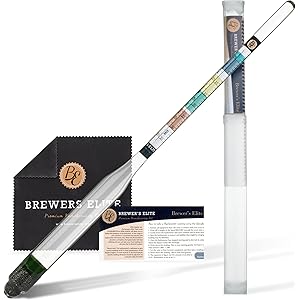Who Discovered Yeast for Bread?
The discovery of yeast for bread-making is a fascinating journey that intertwines science and culinary art. Yeast, a microorganism belonging to the fungi kingdom, has been utilized for thousands of years in the fermentation process, particularly in baking. While it is difficult to pinpoint a single individual responsible for the discovery of yeast, historical evidence suggests that ancient civilizations, such as the Egyptians, were among the first to harness its leavening properties. They likely stumbled upon yeast’s fermentation capabilities when they observed that dough left out in the open would rise and develop bubbles.
The Role of Ancient Egyptians
Ancient Egyptians are often credited with the earliest documented use of yeast in bread-making around 1500 BC. They discovered that allowing dough to ferment naturally led to a lighter and airier texture in their bread. This process was likely accidental, as they would have noticed that leftover dough from previous baking sessions would cause new batches to rise. The Egyptians refined this technique over time, leading to the production of leavened bread, which became a staple in their diet.
Fermentation and Its Importance
Fermentation is a crucial process in baking that involves the conversion of sugars into carbon dioxide and alcohol by yeast. This process not only helps the dough rise but also enhances the flavor and texture of the bread. The carbon dioxide produced during fermentation creates air pockets in the dough, resulting in a light and fluffy loaf. The understanding of fermentation was likely developed gradually, as bakers observed the effects of yeast on their dough over generations.
Advancements in Yeast Cultivation
As civilizations progressed, so did the methods of yeast cultivation. By the Middle Ages, bakers in Europe began to refine their techniques, leading to the development of sourdough starters. These starters contained wild yeast and bacteria, which contributed to the unique flavors of the bread. The practice of maintaining a sourdough starter became common, allowing bakers to have a consistent source of yeast for their bread-making endeavors.
Scientific Discoveries in Yeast
In the 19th century, significant advancements in microbiology led to a better understanding of yeast and its role in fermentation. Louis Pasteur, a prominent French scientist, conducted experiments that revealed yeast as a living organism responsible for fermentation. His work laid the foundation for the modern understanding of yeast and its applications in baking and brewing. Pasteur’s discoveries also led to the development of commercial yeast, which revolutionized the baking industry.
Get more content like this!
Sign up to receive updates and new terms first hand.
The Birth of Commercial Yeast
The late 19th century saw the emergence of commercial yeast production, making it more accessible to bakers around the world. Companies began to produce and package dry yeast, allowing for consistent results in bread-making. This innovation transformed the baking landscape, as home bakers and professional chefs alike could rely on a standardized product for their recipes. The convenience of commercial yeast contributed to the widespread popularity of bread-making.
Modern Yeast Varieties
Today, there are various types of yeast available for baking, including active dry yeast, instant yeast, and fresh yeast. Each type has its unique characteristics and applications, catering to different baking needs. Active dry yeast, for instance, requires proofing before use, while instant yeast can be mixed directly into the dry ingredients. Understanding these differences allows bakers to choose the right yeast for their specific recipes, ensuring optimal results.
The Cultural Significance of Yeast in Bread
Yeast has not only played a crucial role in the science of baking but has also held cultural significance throughout history. Bread is often referred to as the “staff of life,” symbolizing sustenance and nourishment in many cultures. The process of bread-making, which includes the use of yeast, has been passed down through generations, becoming a cherished tradition in numerous societies. Festivals, rituals, and communal gatherings often revolve around the act of baking bread, highlighting its importance in human culture.
Conclusion: The Legacy of Yeast in Baking
The journey of discovering yeast for bread is a testament to human ingenuity and the intersection of science and culinary arts. From ancient civilizations to modern baking practices, yeast has remained a fundamental ingredient in creating delicious bread. As we continue to explore the world of baking, the legacy of yeast will undoubtedly endure, inspiring future generations of bakers to experiment and innovate.




